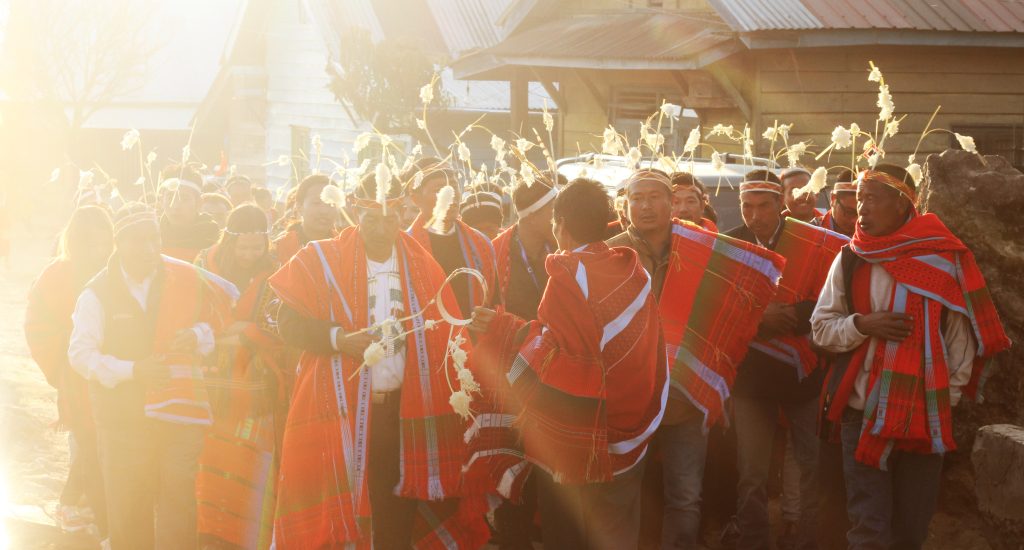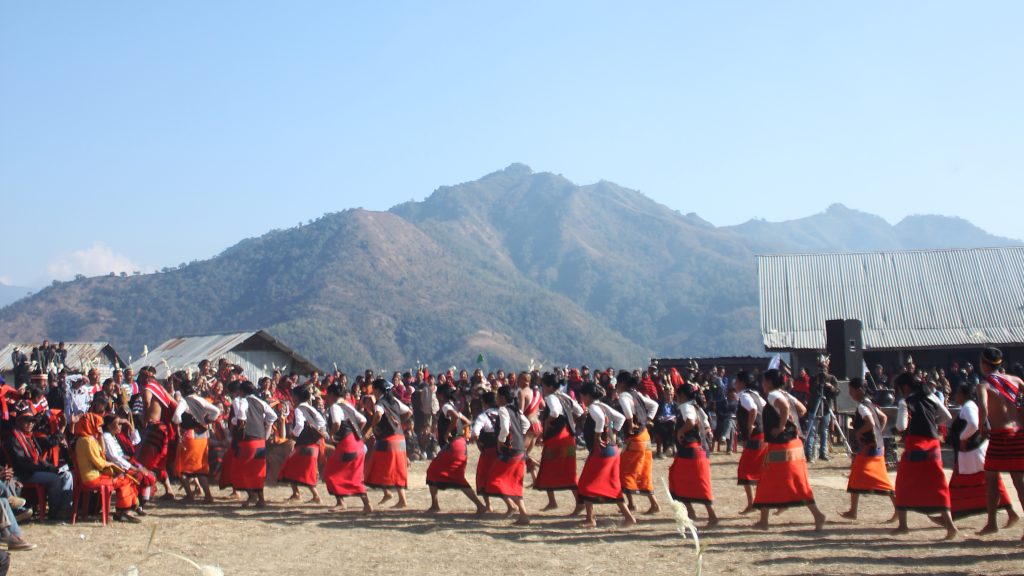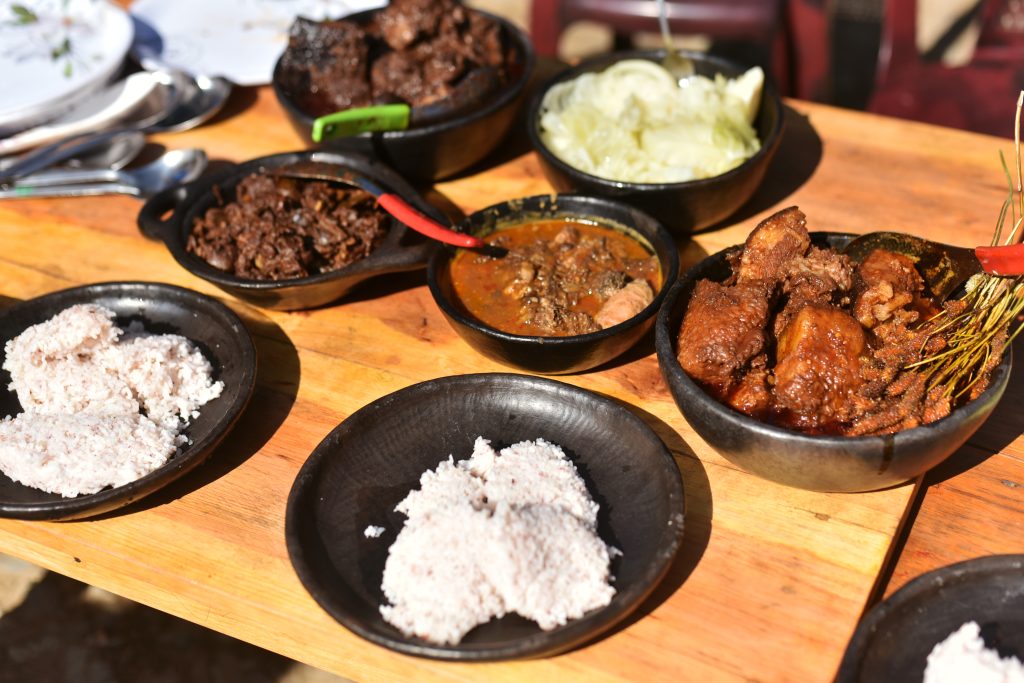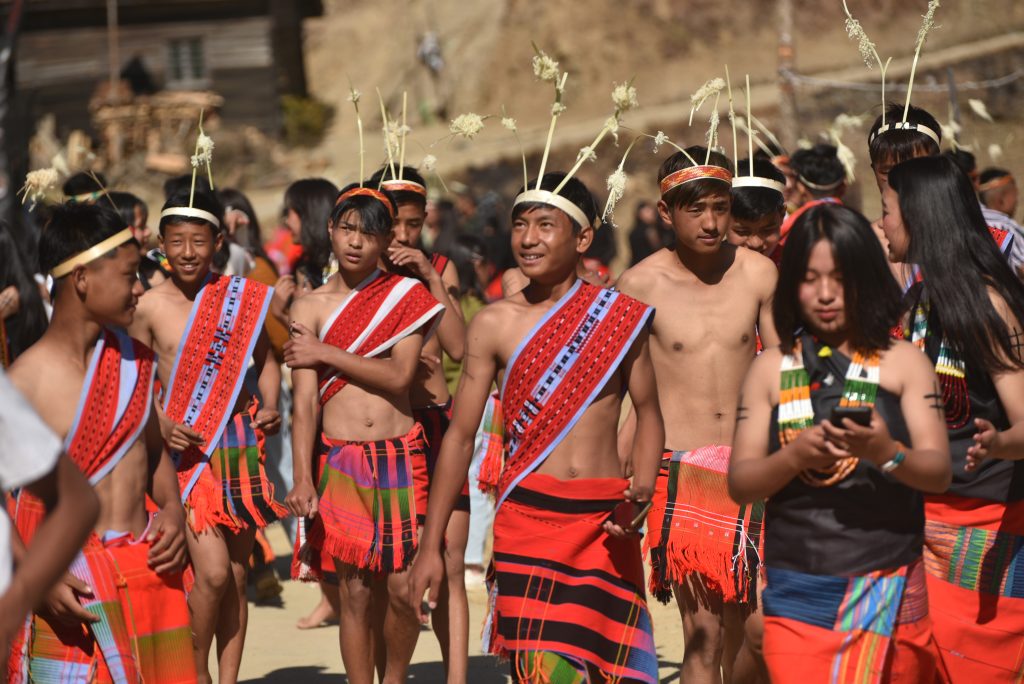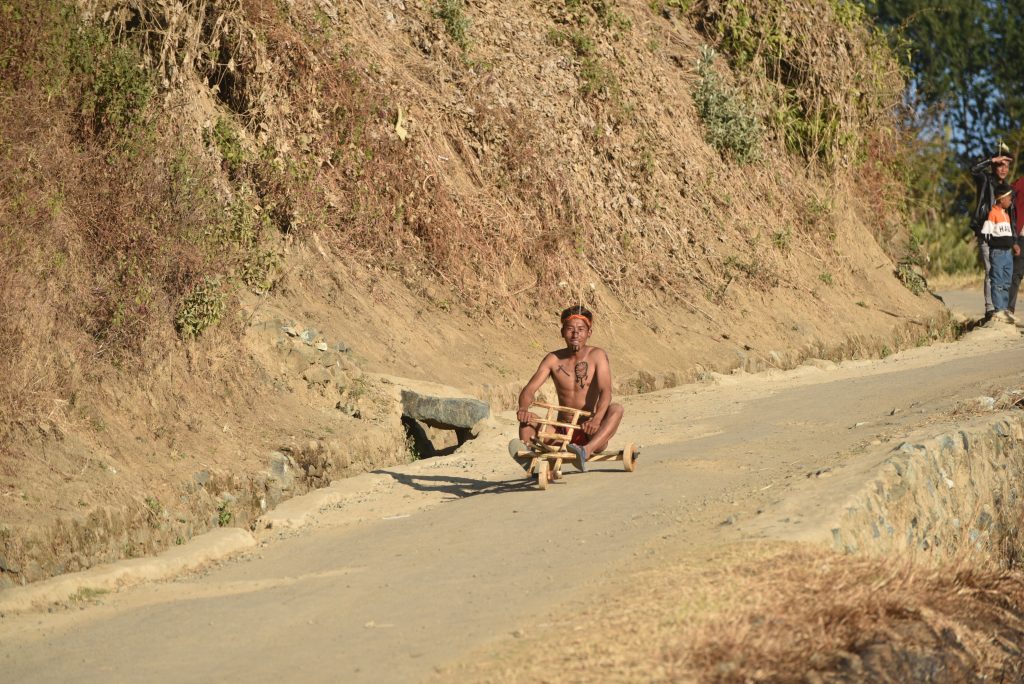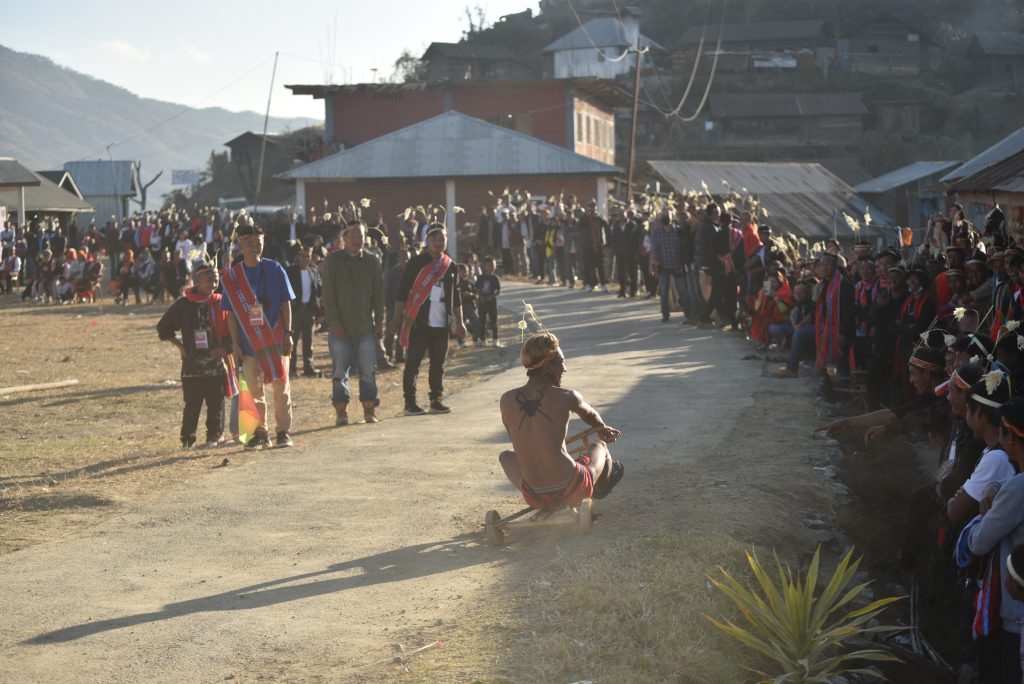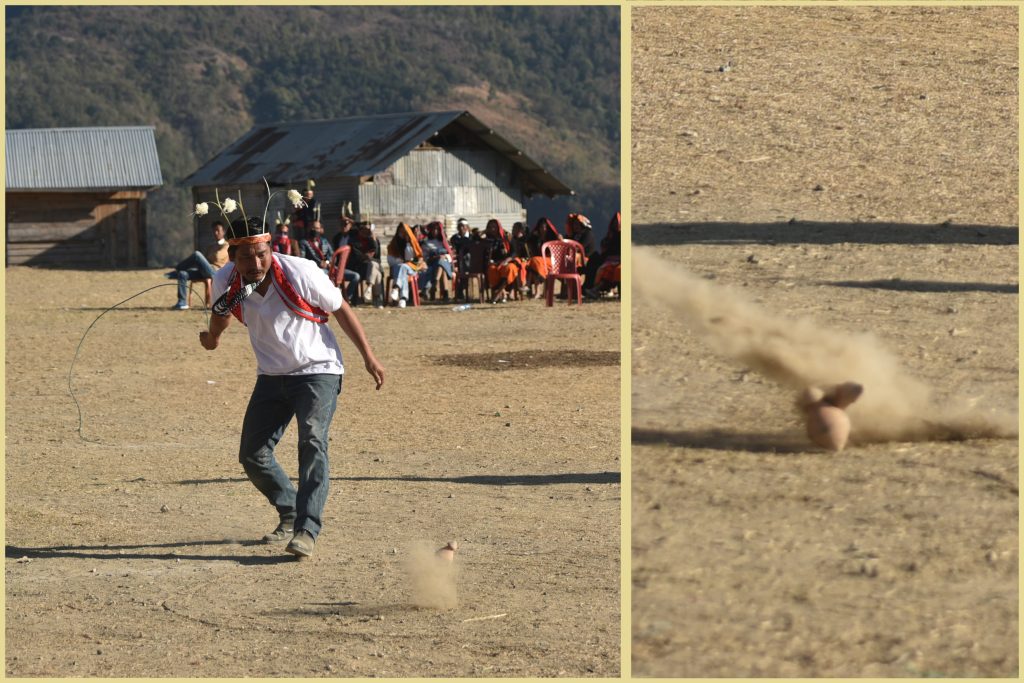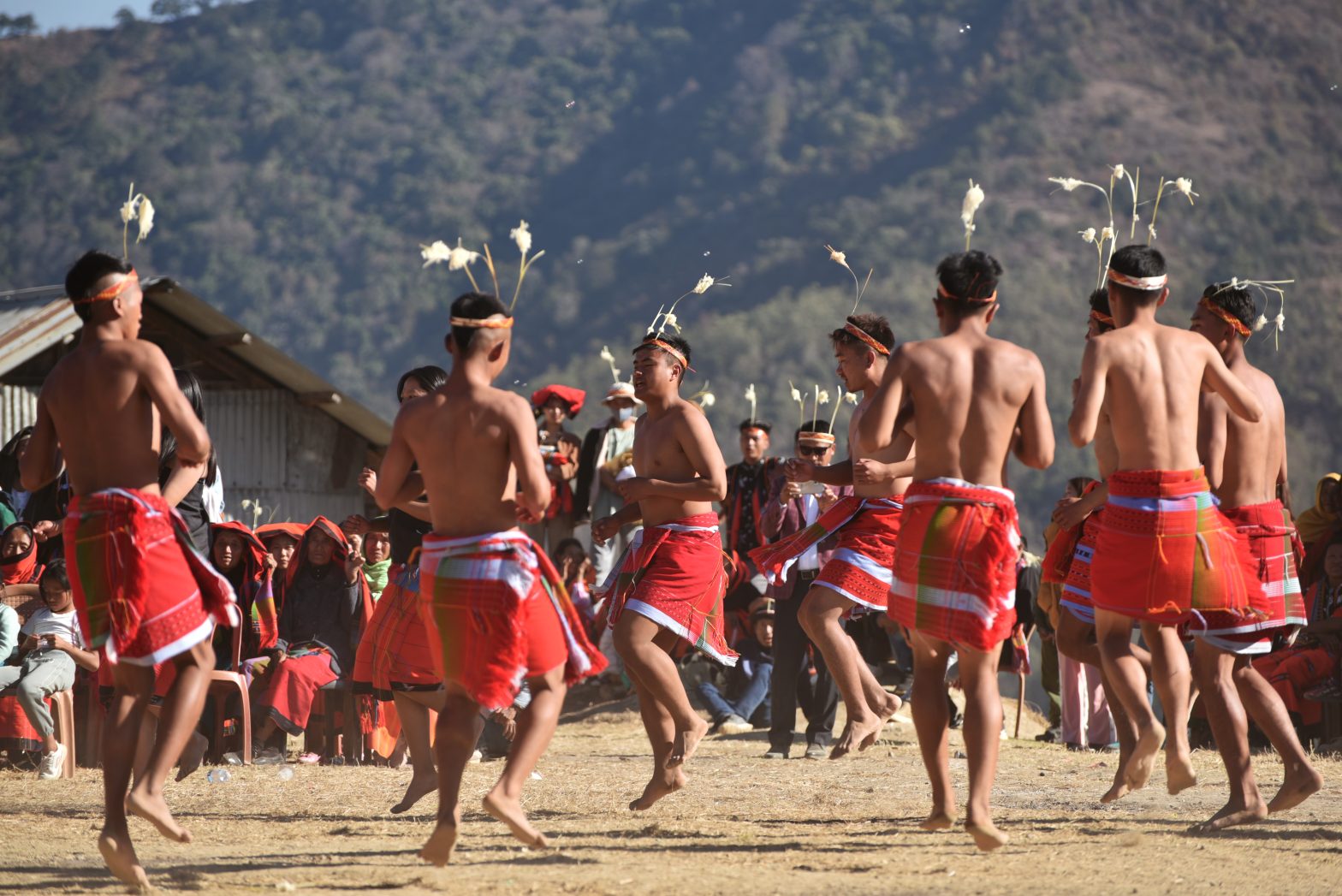
Photo essay: Sowing seeds of festivity in Manipur
The Tangkhul tribe in Manipur sows seeds – with so much fun and fanfare – it’s an annual festival. The Luira Phanit festival is celebrated a little differently in each village. Here’s a look at Nungbi Khullen’s celebration.
The Luira Phanit festival of the Tangkhuls marks the beginning of the annual seed-sowing. Luira has its origin in two Tangkhul words. Lui means field and ra means dig. The word phanit means festival. Celebrated either during the last week of January or in the early weeks of February, it is the most important and colourful festival of the Tangkhul tribe of Manipur (Photo by Worngachan A Shatsang)
Nungbi Khullen is one village in the northern part of Ukhrul District that celebrates Luira Phanit with much fanfare and pomp. Referred in the local dialect as Luta Phanit, the festival involves various cultural and sporting competitions (Photo by Worngachan A Shatsang)
The most significant aspect of the Luira Phanit is the performance of the Luithui Khami rites by the Awunga (chief king) and his Awungva (chief queen). The chief’s wife sows the first seeds of the year, only after which the villagers are allowed to sow or plant their own seeds for the year ahead. Here the Chief Queen of Nungbi Khullen is seen performing the Luithui Khami rites (Photo by Worngachan A Shatsang)
Guests and friends from neighbouring villages and towns are invited to enjoy the sumptuous feasts offered during the festival. This rice and pork is laid out in Nungbi Khullen’s unique black pottery plates and bowls.(Photo by Worngachan A Shatsang)
From the second till the fourth or fifth day, the villagers spend their days participating in cultural competitions and sports activities and indulge in a spread of delicious food. Young people dressed in traditional attire make their way to the village ground for the Luta Phanit celebrations. (Photo by Worngachan A Shatsang)
Young women dance during the festival while wearing Kongsang, a precious traditional necklace made of sea shells, conch shells, cowrie, and other precious stones. (Photo by Worngachan A Shatsang)
Thing Gari Kathao – wooden cart racing competition is also conducted thot/yar (peers belonging to various age groups) wise where every age group has to make its own wooden carts and drive the same to compete. (Photo by Worngachan A Shatsang)
Sao Katak is an indigenous game where two contestants are pitted against one another and one has to topple the spinning top of their opponent. (Photo by Worngachan A Shatsang)
Luira Festival in all Tangkhul villages also marks the end of leisure time and the start of the hectic workload of an agrarian life. As such, each and every villager, old and young, makes it a case to enjoy to the fullest during the festival. (Photo by Worngachan A Shatsang)
The lead image at the top shows Young men perform a folk dance during Luira Phanit. (Photo by Worngachan A Shatsang)
Worngachan A Shatsang is a freelance journalist based in Ukhrul, Manipur. He writes about football, rural life, farming and environmental issues. He is a Rural Media Fellow 2022 at Youth Hub, Village Square.
